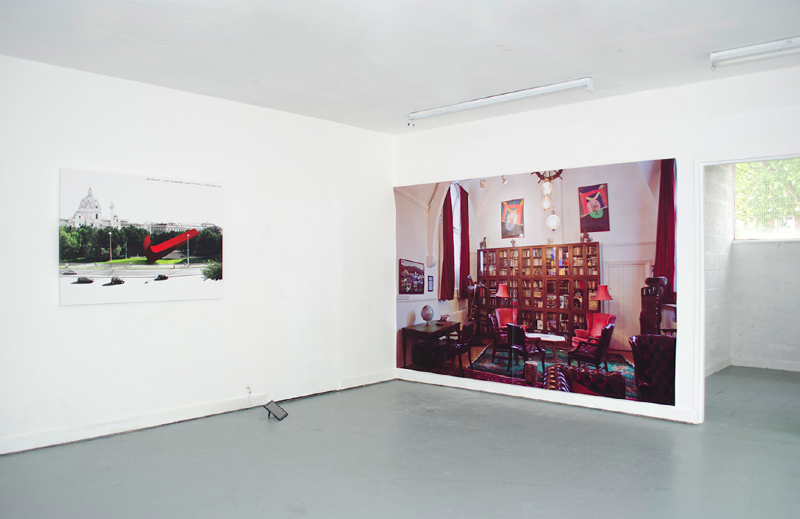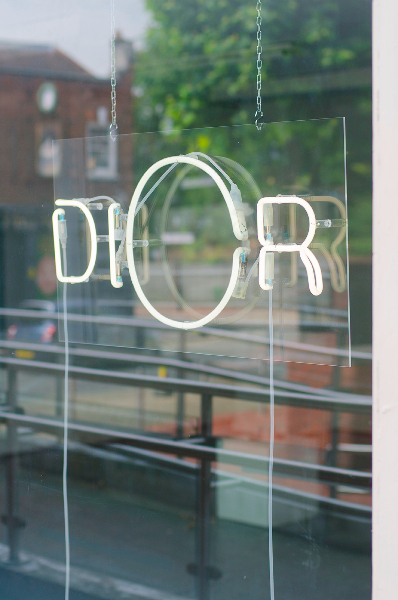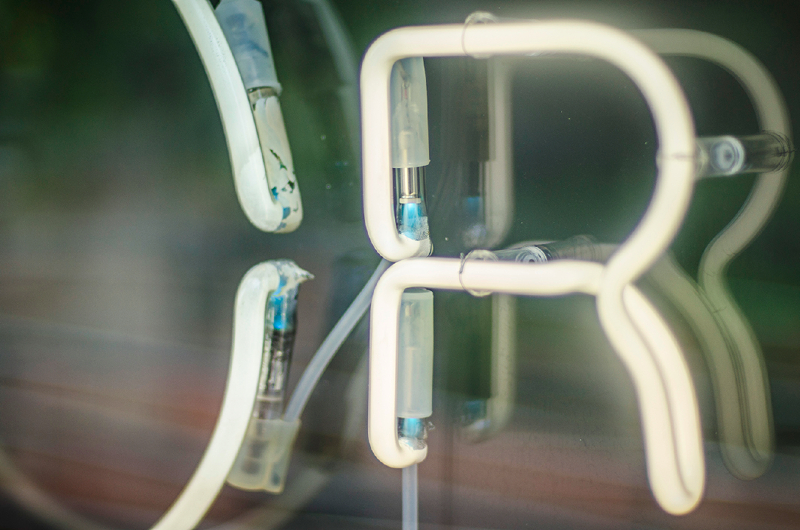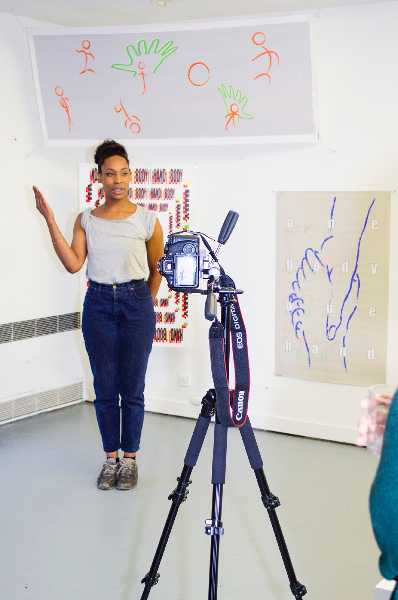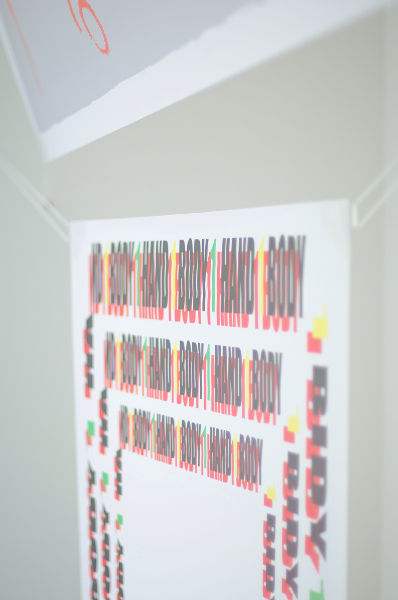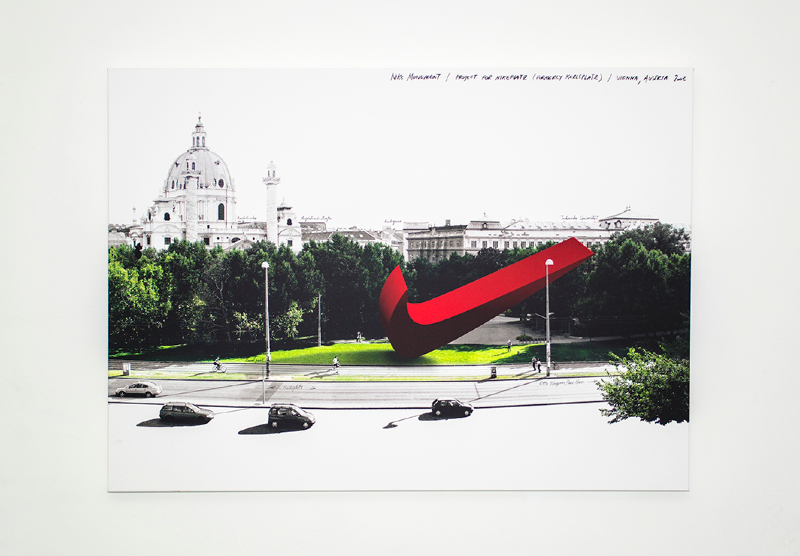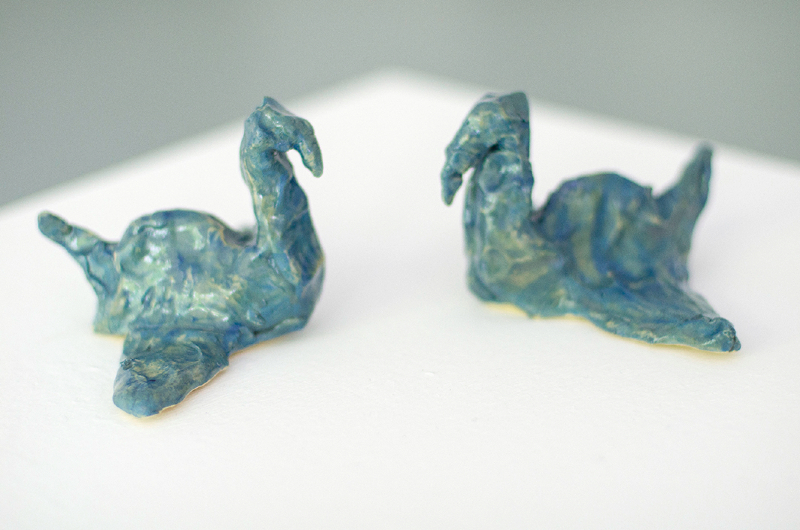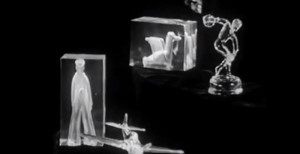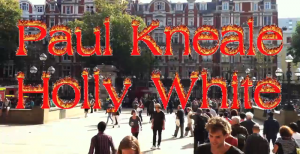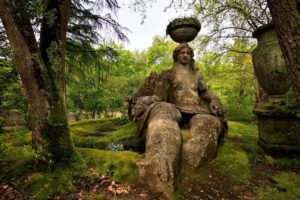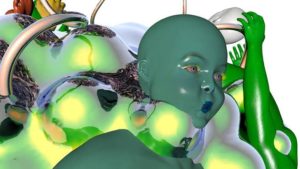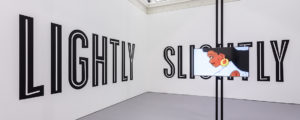Tute Bianche is the Italian protest movement from whom the title for the exhibition Institute Bianche at Library + derives. A group of activists, who at their peak gathered 10,000 supporters to march against the G8 summit in July 2001, into a single padded block, made up of individuals covered in cushions that would soften the blow of any police aggression allowing for a single unified stance against globalisation.
Eva and Franco Mattes’ work ‘Nike Ground’ (2003) comes closest to referencing the ideas of Tute Bianche. Anti-corporate, as well as anti-elitist, it breaks down boundaries between viewer and artist in its clear graphic illustration of the artists’ proposal to take over Karlsplatz, Austria, and transform it into Nikeplatz as a ruse provoking city dwellers. A video to accompany the piece describes their intentions, process and the resulting performance that documents their interviewees unabashed love for, disgust or total apathy toward corporate branding.
A print conversation between curator Harry Burke and acquaintances, unlisted in the exhibitions contents, seems to mirror this uncertainty today. “It’s like working with Bloomberg or something,” responds one participant to which the reply comes, “[is] working with Bloomberg really that different from buying Nike shoes? No.” Honest, open and sincere, the opinions point to a struggle in which individuals aim to lead an ethical lifestyle is a constant negotiation with larger market forces, and a greater psyche that accepts ambivalence despite the efforts of authors like Mark Fisher (of the The Otolith Group) to reverse the idea that capitalism is the only realism.
Property ownership is also touched on at one point in the conversation; an issue that artist Paul Kneale points to with ‘Rotherhithe-Dior’ (2013). With Library + itself being the first drop of gentrification to fall on Albion Street, as artists start to move out from South London in search of cheaper rent further east. A house on the road has a notice pinned to its door warning forced entry will be made on the February 15, 2013. Its neighbour’s windows are bricked up and a nearby pub stands abandoned. At the exhibition’s entrance the word “Dior”, emblazoned in white neon letters, references this seeming inevitability, building on the exhibition’s narrative, as well as its location.
An alternative vision is presented by Miami-Dutch. A self described “corps collectif of self-evasive characters” whose motto “one body, one hand (a hand with six fingers)” is displayed in a series of icons and graphic posters that say an art collective too can be corporate in its use branding, while commenting on the augmentation of labour itself.
Artist Julia Tcharfas’ large scale photograph sets up this palindrome in an institutional context with what appears to be an elitist “Club Room” but in fact is the historic setting of talks between soviet cosmonauts and British counterparts in Bloomsbury. It is both a metaphor for the space race’s power to bring opposite sides of the political spectrum together toward a dream goal but also an architectural image of a space that can function as a different type of place, depending on who the occupant is. That’s an idea rendered once again and reinforced when the bizarre knowledge that the club room has been the site of an “end of the world party” comes to light. It’s a poignant reminder that any institution relies on its members’ bond and their cause, which may or may not outlive tomorrow.
Institute Blanche runs at London’s Library + from the Friday, June 28 to Sunday, July 14, 2013.

